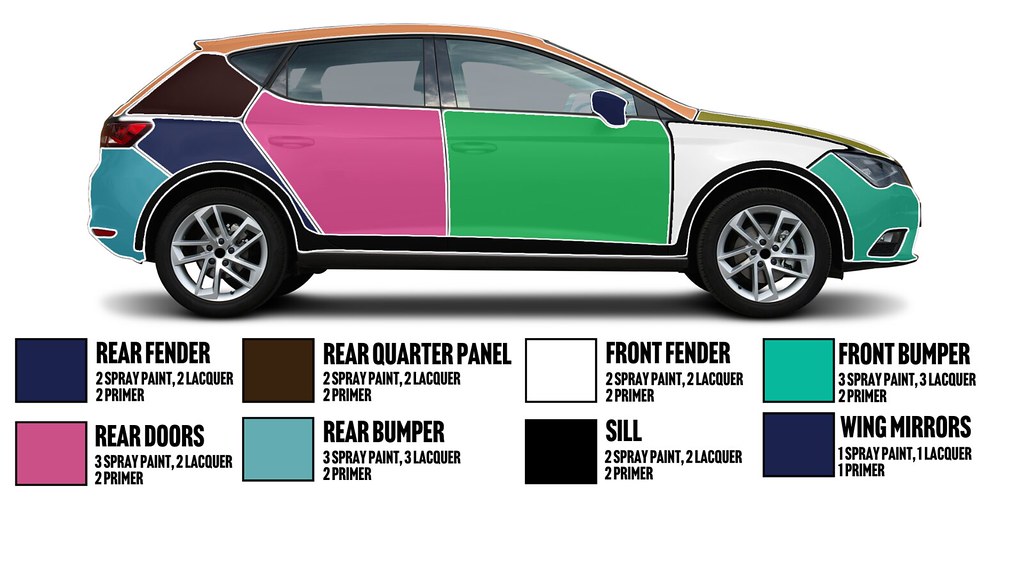How to use an aerosol
PaintNuts' Aerosols are ideal for addressing large bodywork repairs. Below is our recommended guide for using and applying our aerosol paint effectively.
Depending on your damage in most cases with car paint aerosol we would recommend using a Primer first. If rust is present, we also suggest our Rust Convertor.
Not sure if Aerosols are right for the job? You can carry out a damage assesment using our tool.

Prepare & Clean
When you're prepared to begin the painting process, begin by smoothing the surface with wet and dry sandpaper to reduce any imperfections. We suggest using the Norton Topcoat project pack for optimal results.
The surface must be clean and dry - make sure all wax, polish and grease is removed. For best results use PaintNuts Panel Wipe Spray and Degreasing Cloth then a Sticky Tac Rag to remove any dust.
Shake & Test
Shake aerosol for 2-3 minutes to ensure the paint within the can is mixed.
Before applying the paint to the vehicle, we recommend testing the colour and which spray pattern you require, you can adjust the nozzle to spray horizontally or vertically.
On white card - check how many coats you require to match the original colour. Too few coats will look too light, too much paint/ too many coats will make the colour too dark.
Paint & Finish
Either vertically or horizontally apply in smooth cross coats 250mm distance from the repair.
Leave to dry for 15 minutes before applying a second coat if necessary and leave 4 hours before applying PaintNuts lacquer.
After use turn the aerosol upside down to empty nozzle valve to clean then it can be reused at a later date.
PLEASE NOTE: – Aerosols should not be applied in cold, damp weather – it will adversely affect the application, finish, and drying time.
The recommended minimum temperature for using spray paint is 15+ degrees, preferably room temperature indoors in a warm and well-ventilated area.

Scratch 'N' Chip Top Tips
The Do’s and Don’ts
- Do – use a primer first if bare metal or plastic shows or in particularly deep scratches or chips.
- Do – test the colour after giving it a good shake as different paints in the mixture weigh differently and will settle so colours in the bottle or pen can look misleading– it needs to be thoroughly shaken and tested in a discreet area to compare.
- Do – use a lacquer if the paint is very metallic or pearlescent.
- DO NOT - get paint on original undamaged paint work as it will make the colour darker drawing attention to the repaired area.
- DO NOT –apply paint in cold, damp weather – it will affect the application and finish, especially with aerosols.
- DO NOT – apply the paint too thick –to get the best results and avoid running drops it requires thin layers to build it up to original height.
- DO NOT – wash your car with a power washer for the first week after touching up car paint work.
Car Panel Coating Estimator:
Welcome to the PaintNuts Car Panel Coating Estimator. Our graphics are color-coded and numbered for easy navigation. Each part corresponds to a specific color. Discover the ideal quantities of paint aerosols, lacquers, and primers for a flawless restoration below.





